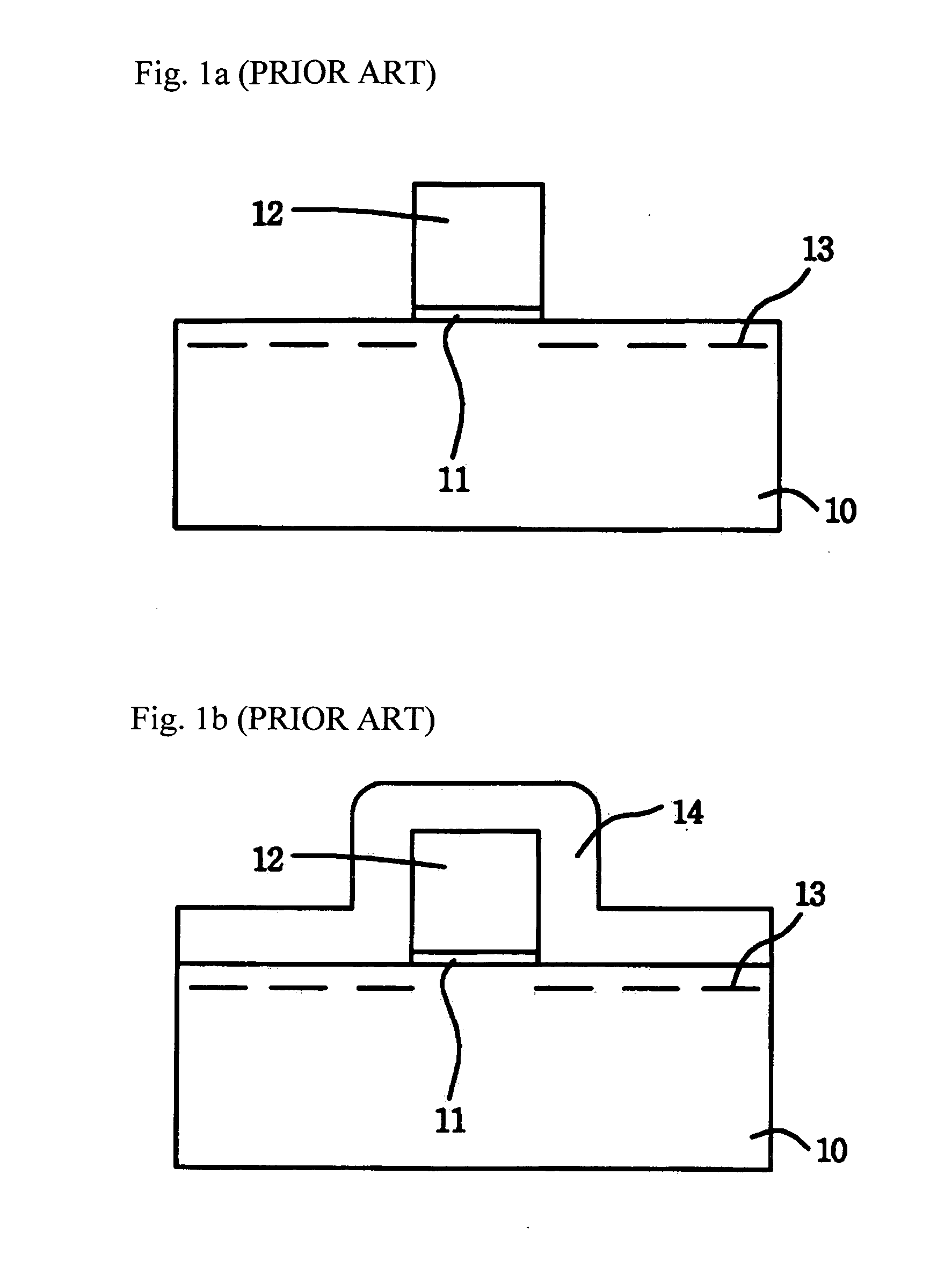Methods of forming silicide layer of semiconductor device
a technology of semiconductor devices and silicide layers, which is applied in the direction of semiconductor devices, basic electric elements, electrical appliances, etc., can solve the problems of reducing the operation speed of the gate, deteriorating the operation speed of the device, and reducing the area of the unit device, so as to achieve the effect of increasing the sheet resistance of the ga
- Summary
- Abstract
- Description
- Claims
- Application Information
AI Technical Summary
Benefits of technology
Problems solved by technology
Method used
Image
Examples
Embodiment Construction
[0022] Reference will now be made in detail to the preferred embodiments of the present invention, examples of which are illustrated in the accompanying drawings.
[0023]FIGS. 2a through 2e are cross-sectional views illustrating an example process of forming silicide layers of a semiconductor device.
[0024] Referring to FIG. 2a, at least one device isolation layer 210 is formed in a semiconductor substrate 200 by a shallow trench isolation process or a LOCOS process. A gate oxide layer 220 is formed on the semiconductor substrate 200. A polysilicon layer for a gate 230, a buffer oxide layer 240, and a buffer nitride layer 250 are sequentially deposited on the gate oxide layer 220. Some portion of the polysilicon layer, the buffer oxide layer, and the buffer nitride layer is removed to form a gate 230. A polyoxide layer 260 is formed on the sidewalls of the gate 230. An ion implantation process is performed to form LDD structures 270 in the semiconductor substrate 200. After an insula...
PUM
 Login to View More
Login to View More Abstract
Description
Claims
Application Information
 Login to View More
Login to View More - R&D
- Intellectual Property
- Life Sciences
- Materials
- Tech Scout
- Unparalleled Data Quality
- Higher Quality Content
- 60% Fewer Hallucinations
Browse by: Latest US Patents, China's latest patents, Technical Efficacy Thesaurus, Application Domain, Technology Topic, Popular Technical Reports.
© 2025 PatSnap. All rights reserved.Legal|Privacy policy|Modern Slavery Act Transparency Statement|Sitemap|About US| Contact US: help@patsnap.com



